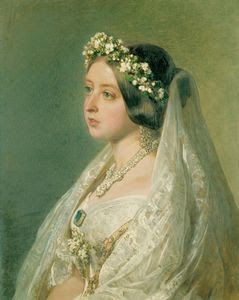It's Oscar Sunday, so the neighborhood is essentially shut down and I'm at home, Crock-Pot going, eagerly awaiting the start of the red carpet shows.
In honor of the day I thought I'd post an interesting pair of wing chairs I found last week. We've been looking for a set for quite a while now, so on Thursday a friend and I popped into an antiques mall in Pasadena to see what we could find. And there on the ground floor, all the way at the back, we spotted these... a charming duo from the estate of Hollywood legend Kathryn Grayson.
The actress, known for her roles in Lovely to Look At (designed by one of my personal favorites, Tony Duquette), Kiss Me Kate, Show Boat, and Anchors Away, died in Los Angeles in 2010, so presumably the chairs came out of her estate at that point. Finding the image of her below, from the 1950s and seated in a similar style of chair going over interior schemes, was just an added dose of fun.
The wing chairs, which date to the 1940s and are newly reupholstered, are with dealer Richard Baker of Baker St. Antiques & Decorative Arts. $3,350 for the pair; 562-644-0794
In honor of the day I thought I'd post an interesting pair of wing chairs I found last week. We've been looking for a set for quite a while now, so on Thursday a friend and I popped into an antiques mall in Pasadena to see what we could find. And there on the ground floor, all the way at the back, we spotted these... a charming duo from the estate of Hollywood legend Kathryn Grayson.
 |
| Kathryn Grayson's wing chairs, a touch of the traditional in a very glamorous life. |
The actress, known for her roles in Lovely to Look At (designed by one of my personal favorites, Tony Duquette), Kiss Me Kate, Show Boat, and Anchors Away, died in Los Angeles in 2010, so presumably the chairs came out of her estate at that point. Finding the image of her below, from the 1950s and seated in a similar style of chair going over interior schemes, was just an added dose of fun.
 |
| Kathryn Grayson 1950, © 1978 Paul Hesse/mptvimages |
The wing chairs, which date to the 1940s and are newly reupholstered, are with dealer Richard Baker of Baker St. Antiques & Decorative Arts. $3,350 for the pair; 562-644-0794

























